The bronze bust of Sir William Henry Bragg was installed in the Prince Henry Gardens on North Terrace on 2 December 2015, the centenary of his receipt of the Nobel Prize in Physics. It was created by the well-known South Australian artist and sculptor Robert Hannaford, whose works of bronze statuary were already seen around Adelaide. The bust was unveiled at a ceremony led by Governor Hieu Van Le and attended by representatives from a variety of scientific institutions. Two other speakers present at the ceremony were Bragg’s granddaughter Dr Lucy Adrian, Emeritus Fellow of the University of Cambridge in Geography, as well as Dr Paul Willis, the Director of the Royal Institute of Australia, an organisation devoted to public scientific learning.
The installation of William Bragg’s bust in 2015 followed the unveiling of a bust of his son, Sir William Lawrence Bragg (known as Lawrence) at the same location on North Terrace in 2012. The father and son had shared the 1915 prize between them, with Lawrence the youngest ever recipient at the time, at the age of only 25. The bust of Lawrence Bragg was installed for the centenary of the publication of their original research on x-ray diffraction in 1912, and was a copy of an original created by British sculptor John W Mills before Bragg died in 1971. In 2007, a set of new castings from the original mould was made, with one offered to the City of Adelaide to display on North Terrace.
After the unveiling of Lawrence Bragg’s bust, Dr Paul Willis and the Royal Institute had immediate plans to produce a bust of William Bragg in 2015 to mark the other major centenary involving the Braggs’ contributions to scientific understanding, their 1915 receipt of the Nobel Prize in Physics. Unfortunately for their plans, no existing bust was able to be copied, so a new piece needed to be commissioned. This was a much more expensive proposition than simply using an existing cast. To solve the issue of funding, a committee was formed within the Royal Institute of Australia to identify institutions around the world which were potentially interested in having their own copy of a bust of William Bragg. After finding four purchasers, enough funds were raised to produce a copy for themselves. One of these busts now resides in King William’s College on the Isle of Man, where Bragg spent some time as a student, and another at the University of Leeds, the institution at which he conducted his award-winning research.


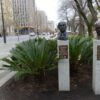

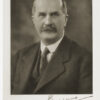
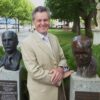
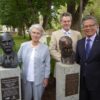

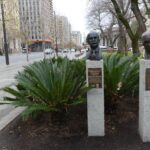
Comments